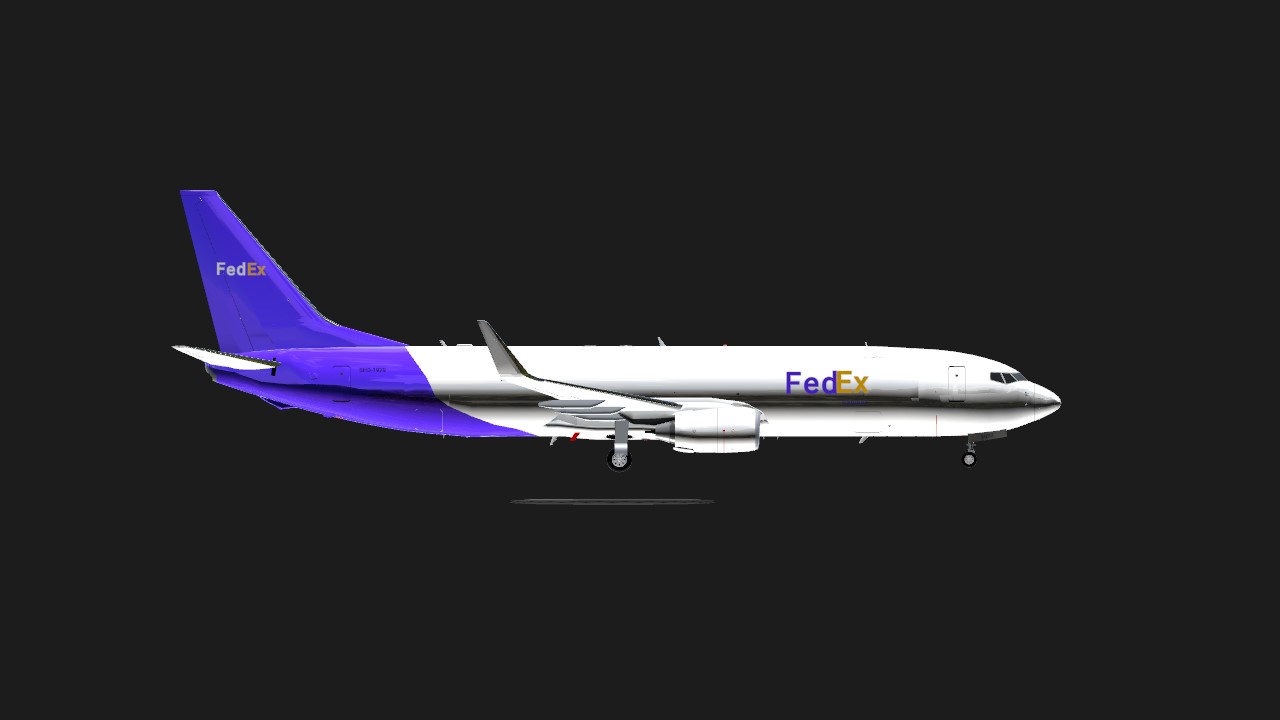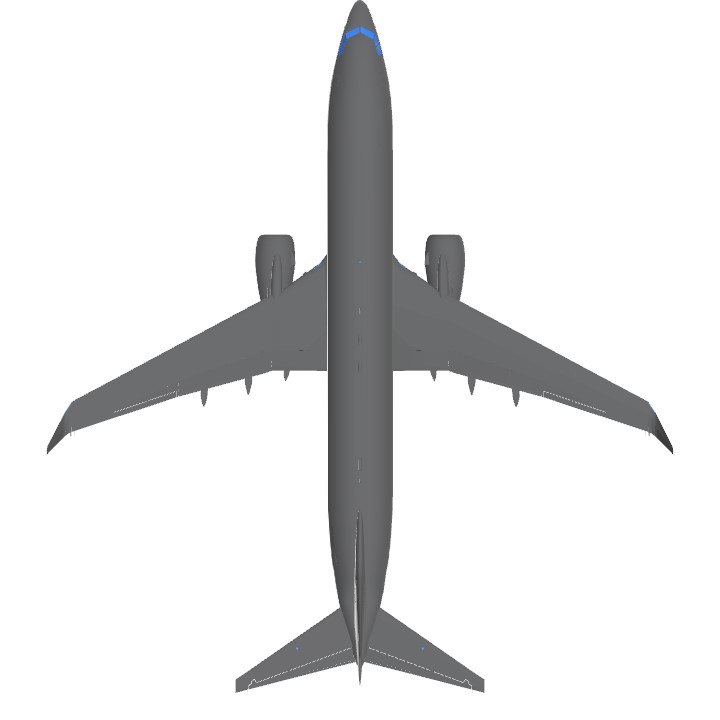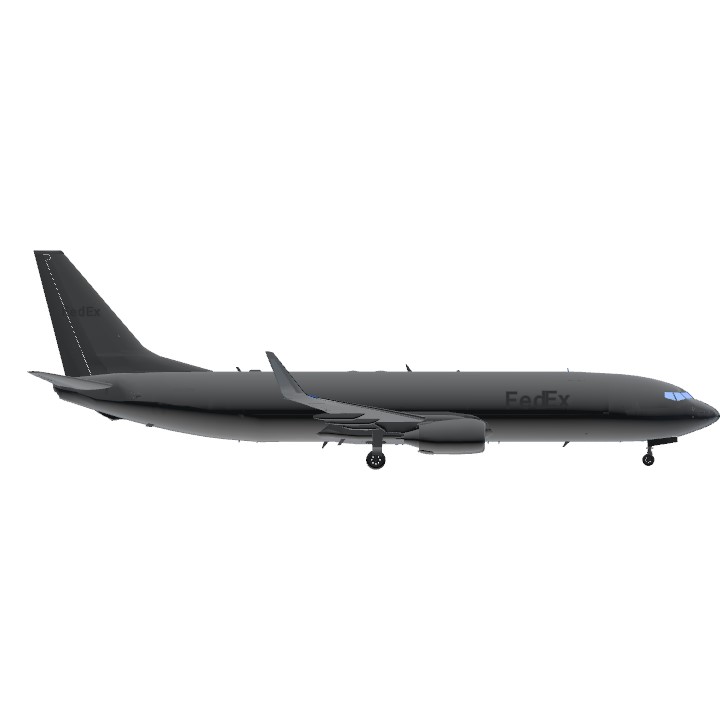CREDITS
Livery made by me
Aircraft made by the greatest airplane maker, Necc95.
About FedEx Express
FedEx Express is a major American cargo airline based in Memphis, Tennessee, United States. As of 2020, it is one of the world's largest airlines in terms of fleet size and freight tons flown.[2] It is the namesake and leading subsidiary of FedEx Corporation, delivering freight and packages to more than 375 destinations over 220 countries across six continents each day.[3] FedEx Express is also the world's largest express transportation company.
Its headquarters are in Memphis with its global "SuperHub" located at Memphis International Airport.[4] In the United States, FedEx Express has a national hub at Indianapolis International Airport. Regional hubs are located at Ted Stevens Anchorage International Airport, Fort Worth Alliance Airport, Piedmont Triad International Airport, Miami International Airport, Newark Liberty International Airport, Oakland International Airport and Ontario International Airport. International regional hubs are located at Cologne Bonn Airport, Dubai International Airport, Guangzhou Baiyun International Airport, Liège Airport, Milan Malpensa Airport, Kansai International Airport, Charles de Gaulle Airport, Incheon International Airport, Shanghai Pudong International Airport, Singapore Changi Airport and Toronto Pearson International Airport.[5] There are a total of 13 air hubs in the company's worldwide network.[6] The company slogan is "The World On Time".
Early History about FedEx Express
he concept for what became Federal Express came to Fred Smith in the mid-1960s, while an undergraduate student at Yale.[7][8] For an economics class, he submitted a paper which argued that in modern technological society time meant money more than ever before and with the advent of miniaturized electronic circuitry, very small components had become extremely valuable. He argued that the consumer society was becoming increasingly hungry for mass-produced electronic items, but the decentralizing effect induced by these very devices gave manufacturers tremendous logistic problems in delivering the items. Smith felt that the necessary delivery speed could only be achieved by using air transport. But he believed that the U.S. air cargo system was so inflexible and bound by regulations at that time that it was completely incapable of making sufficiently fast deliveries.[7] Plus, the U.S. air cargo industry was highly unsuited to the role. Its system depended on cooperation between companies, as interlining was often necessary to get a consignment from point A to point B, and the industry relied heavily on cargo forwarders to fill hold space and perform doorstep deliveries.[citation needed]
In his paper, Smith proposed a new concept—have one carrier be responsible for a piece of cargo from local pick-up right through to ultimate delivery, operating its own aircraft, depots, posting stations, and delivery vans. To ensure accurate sorting and dispatching of every item of freight, the carrier would fly it from all of its pickup stations to a central clearinghouse, from where the entire operation would be controlled. For years it has been misreported that the professor teaching the course gave the paper the grade of "C",[7] but Fred clarified in a 2004 interview that the grade is not known and the reports of a "C" grade were due to his response to a reporter who asked him what grade he received and his reply was, "I don't know, probably made my usual C."[8][9] Despite the professor's opinion, Smith held on to the idea.[10]
Smith founded Federal Express Corporation in 1971 with $4 million from his inheritance and $91 million in venture capital.[11] in Little Rock, Arkansas,[12] where Smith was operating Little Rock Airmotive. After a lack of support from Little Rock National Airport, Smith moved the company to Memphis, Tennessee and Memphis International Airport in 1973.[13]
First FedEx Express aircraft, a Dassault Falcon 20 named Wendy, on display at Steven F. Udvar-Hazy Center.
The company started overnight operations on April 17, 1973, with fourteen Dassault Falcon 20s that connected twenty-five cities in the United States.[13] Fred Smith's childhood friend, John Fry of Ardent Studios, sent Ardent partner Terry Manning to the Federal Express home office on Democrat Road near the Memphis Airport with the first package to be put into the system. That night, 186 packages were carried.[13] Services included both overnight and two-day package and envelope delivery services, as well as Courier Pak. Federal Express began to market itself as "the freight service company with 550-mile-per-hour delivery trucks". However, the company began to experience financial difficulties, losing up to a million USD a month. While waiting for a flight home to Memphis from Chicago after being turned down for capital by General Dynamics, Smith impulsively hopped a flight to Las Vegas, where he won $27,000 playing blackjack. The winnings enabled the cash-strapped company to meet payroll the following Monday. "The $27,000 wasn't decisive, but it was an omen that things would get better", Smith says.[14] In the end, he raised somewhere between $50 and $70 million, from twenty of the US's leading risk venture speculators, including such companies as the First National City Bank of New York and the Bank of America in California. At the time, Federal Express was the most highly financed new company in U.S. history, in terms of venture capital.[10]
Federal Express installed its first drop box in 1975 which allowed customers to drop off packages without going to a company local branch.[13] In 1976, the company became profitable with an average volume of 19,000 parcels per day.
About The 737-NG (800BCF)
In February 2016, Boeing launched a passenger-to-freighter conversion program, with converted aircraft designated as 737-800BCF (for Boeing Converted Freighter). Boeing started the program with orders for 55 conversions, with the first converted aircraft due for late 2017 delivery.[59] The first converted aircraft was delivered to West Atlantic in April 2018.[60]
At the 2018 Farnborough Airshow, GECAS announced an agreement for 20 firm orders and 15 option orders for the 737-800BCF, raising the commitment to 50 aircraft. Total orders and commitments include 80 aircraft to over half a dozen customers.[61] Since early 737NG aircraft become available on the market, they have been actively marketed to be converted to cargo planes via the Boeing Converted Freighter design because the operational economics are attractive due to the low operating costs and availability of certified pilots on a robust airframe.[citation needed]
Modifications to the 737-800 airframe include installing a large cargo door, a cargo handling system, and additional accommodations for non-flying crew or passengers.[61] The aircraft is designed to fly up to 1,995 nmi (3,695 km) at a MTOW of 174,100 lb (79,000 kg).[62]
Specifications
General Characteristics
- Predecessor Boeing 737-800 (-WINGLETS-)
- Created On Windows
- Wingspan 220.4ft (67.2m)
- Length 253.3ft (77.2m)
- Height 77.2ft (23.5m)
- Empty Weight N/A
- Loaded Weight 119,432lbs (54,173kg)
Performance
- Power/Weight Ratio 3.387
- Wing Loading 25.1lbs/ft2 (122.4kg/m2)
- Wing Area 4,764.8ft2 (442.7m2)
- Drag Points 151889
Parts
- Number of Parts 1724
- Control Surfaces 5
- Performance Cost 6,877





